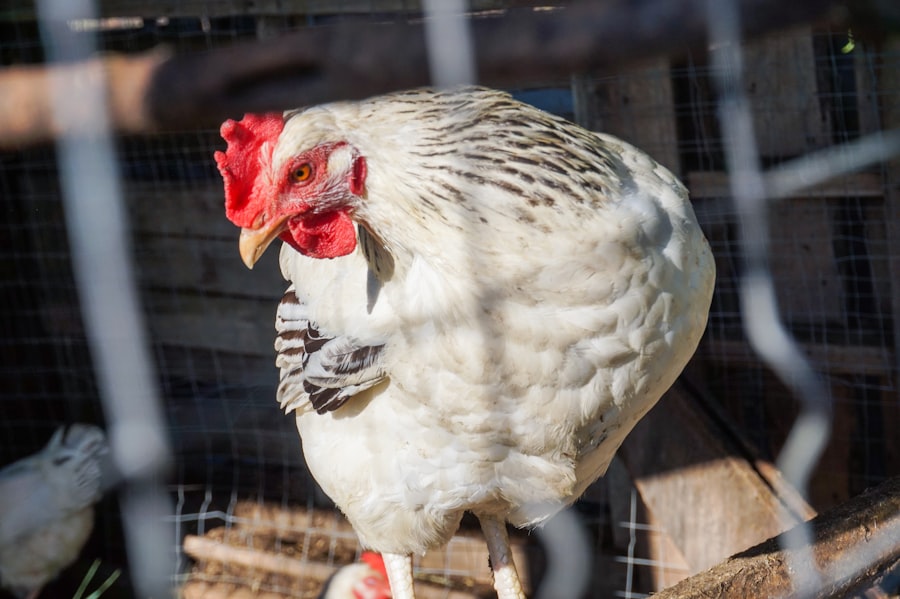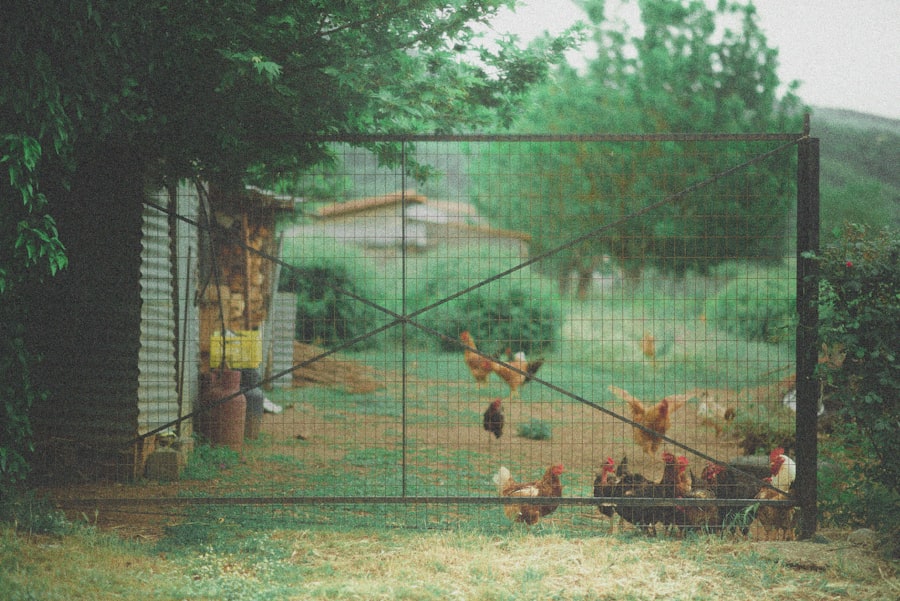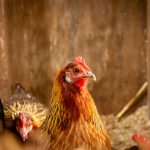Chicken keeping is a popular and sustainable practice that provides fresh eggs and meat for many households. However, rat infestations in chicken coops are a common challenge faced by poultry owners. Rats are drawn to chicken coops due to the abundance of food, water, and shelter they provide.
The presence of rats can pose significant health risks to both chickens and their caretakers. This article examines the complex relationship between chickens and rats, identifying the factors that make chicken coops attractive to rodents. It also discusses effective methods for preventing rat infestations in chicken coops and outlines the potential health hazards associated with rat presence.
Additionally, the article addresses legal considerations related to chicken keeping and rat population management. By exploring these topics, the article aims to provide comprehensive guidance on maintaining a rat-free chicken coop environment. It concludes with practical recommendations for successfully raising chickens while minimizing the risk of attracting rats.
Table of Contents
- 1 The relationship between chickens and rats
- 2 Factors that attract rats to chicken coops
- 3 Methods for preventing rats in chicken coops
- 4 Potential health risks associated with rats in chicken coops
- 5 Legal considerations for keeping chickens and managing rat populations
- 6 Conclusion and recommendations for keeping chickens without attracting rats
- 7 FAQs
- 7.1 What are the potential risks of keeping chickens in relation to rats?
- 7.2 How can chicken owners prevent rats from being attracted to their coop?
- 7.3 Are there any specific measures that can be taken to deter rats from the chicken coop?
- 7.4 Can keeping chickens in an urban or suburban area increase the risk of rats?
- 7.5 What are the potential health risks associated with rats in the chicken coop?
Key Takeaways
- Rats are a common issue in chicken coops and can pose health risks to both chickens and humans.
- Chickens and rats have a complex relationship, with rats being attracted to the food and shelter provided by chicken coops.
- Factors such as food availability, water sources, and shelter can attract rats to chicken coops.
- Preventing rats in chicken coops can be achieved through measures such as proper food storage, coop maintenance, and predator control.
- Rats in chicken coops can pose potential health risks, including the spread of diseases such as salmonella and avian influenza.
The relationship between chickens and rats
Competition for Resources
Chickens and rats have a complex relationship that is often characterized by competition for resources. Rats are attracted to chicken coops because they provide a readily available source of food in the form of chicken feed, eggs, and even young chicks. Additionally, the coop itself provides shelter for rats to nest and breed, making it an ideal environment for them to thrive.
The Benefits and Drawbacks of Rats in Chicken Coops
On the other hand, chickens can also benefit from the presence of rats as they help control insect populations that can be harmful to the chickens. However, the negative impacts of rats in chicken coops far outweigh any potential benefits, as they can spread diseases, damage property, and pose a threat to the health and well-being of both the chickens and their owners.
The Risks of Rats in Chicken Coops
The presence of rats in chicken coops can lead to increased stress for the chickens, as well as potential damage to the coop and equipment. Furthermore, rats can also pose a threat to the health of the chickens by spreading diseases such as salmonella and avian influenza. Therefore, it is important for chicken owners to take proactive measures to prevent rats from infesting their coops.
Factors that attract rats to chicken coops

There are several factors that can attract rats to chicken coops, making them a common problem for chicken owners. One of the main factors is the availability of food in the form of spilled feed, eggs, and even young chicks. Rats are opportunistic feeders and will take advantage of any food source they can find, making chicken coops an ideal target for them.
Additionally, the coop itself provides shelter for rats to nest and breed, further increasing their presence in the area. The presence of water sources such as leaking pipes or standing water can also attract rats to chicken coops, as they need water to survive. Furthermore, the presence of clutter and debris around the coop can provide hiding spots for rats, making it easier for them to establish a presence in the area.
Another factor that can attract rats to chicken coops is poor sanitation practices. If the coop is not regularly cleaned and maintained, it can become a breeding ground for rats and other pests. Additionally, if the coop is not properly secured, rats can easily gain access to it and establish a presence.
Finally, the presence of other pests such as insects can also attract rats to chicken coops, as they provide an additional food source for them. Therefore, it is important for chicken owners to be aware of these factors and take proactive measures to prevent rats from infesting their coops.
Methods for preventing rats in chicken coops
There are several methods that chicken owners can use to prevent rats from infesting their coops. One of the most effective methods is to ensure that the coop is properly secured to prevent rats from gaining access. This can be done by sealing any gaps or holes in the coop with wire mesh or other materials that rats cannot chew through.
Additionally, it is important to keep the coop clean and free of clutter, as this can provide hiding spots for rats. Regularly cleaning up spilled feed and eggs can also help reduce the attractiveness of the coop to rats. Another method for preventing rats in chicken coops is to eliminate potential food sources for them.
This can be done by using rodent-proof feeders and storing feed in secure containers that rats cannot access. Additionally, it is important to promptly remove any dead or sick chickens from the coop, as these can attract rats looking for an easy meal. Keeping the area around the coop free of debris and clutter can also help reduce hiding spots for rats.
In addition to these methods, chicken owners can also use traps and baits to control rat populations around their coops. There are a variety of traps and baits available that are specifically designed for use around chicken coops, making them a safe and effective option for controlling rat populations. It is important to use these methods carefully and according to manufacturer instructions to ensure the safety of both the chickens and any other animals in the area.
Potential health risks associated with rats in chicken coops
The presence of rats in chicken coops can pose several potential health risks for both the chickens and their owners. One of the main risks is the spread of diseases such as salmonella and avian influenza. Rats can carry these diseases and spread them to chickens through direct contact or through contaminated food and water sources.
Additionally, rats can also spread diseases to humans through direct contact or through contaminated surfaces. Another potential health risk associated with rats in chicken coops is the presence of parasites such as fleas and ticks. Rats can carry these parasites and introduce them into the coop, where they can then infest the chickens.
This can lead to increased stress and decreased productivity for the chickens, as well as potential health problems. Furthermore, the presence of rats in chicken coops can lead to increased stress for the chickens, which can make them more susceptible to other health issues such as respiratory infections and reproductive problems. Additionally, rats can cause damage to property such as feeders, waterers, and nesting boxes, further impacting the health and well-being of the chickens.
Legal considerations for keeping chickens and managing rat populations

Regulations Governing Chicken Keeping
When keeping chickens, there are several legal considerations that owners should be aware of. In many areas, there are regulations governing the keeping of chickens, including requirements for coop size, cleanliness, and proximity to neighboring properties.
Regulations on Rat Control Methods
Additionally, there may be regulations governing the use of traps and baits for controlling rat populations around chicken coops. It is essential for chicken owners to familiarize themselves with these regulations and ensure that they are in compliance with them. Failure to comply with these regulations can result in fines or other penalties, so it is crucial to take them seriously.
Impact on Neighboring Properties
Chicken owners should also consider the potential impact of their actions on neighboring properties when managing rat populations around their coops. Using traps and baits near property lines or in areas where other animals may be present can pose risks to those animals and may be subject to additional regulations or restrictions.
Conclusion and recommendations for keeping chickens without attracting rats
In conclusion, while keeping chickens can be a rewarding practice, it is important for chicken owners to be aware of the potential risks associated with attracting rats to their coops. By understanding the relationship between chickens and rats, identifying factors that attract rats to chicken coops, implementing methods for preventing rats in chicken coops, being aware of potential health risks associated with rats in chicken coops, considering legal considerations for keeping chickens and managing rat populations, chicken owners can take proactive measures to keep their coops rat-free. Some recommendations for keeping chickens without attracting rats include ensuring that the coop is properly secured to prevent rats from gaining access, eliminating potential food sources for them by using rodent-proof feeders and storing feed in secure containers, keeping the coop clean and free of clutter, using traps and baits carefully according to manufacturer instructions if necessary, being aware of legal considerations governing the keeping of chickens and managing rat populations.
By following these recommendations and taking proactive measures to prevent rats from infesting their coops, chicken owners can enjoy all the benefits of keeping chickens without having to worry about the negative impacts of rat infestations.
If you’re considering keeping chickens, you may be wondering if it will attract rats. According to a recent article on Poultry Wizard, “How to Keep Rats Away from Your Chicken Coop,” there are several steps you can take to prevent rats from being attracted to your chicken coop. From proper coop placement to regular cleaning and maintenance, there are ways to minimize the risk of rats becoming a problem when keeping chickens. Check out the article for more tips and advice on this topic. https://poultrywizard.com/keeping-chickens/where-to-put-chicken-coop/
FAQs
What are the potential risks of keeping chickens in relation to rats?
There is a potential risk of attracting rats to the area where chickens are kept due to the presence of food sources such as chicken feed and eggs.
How can chicken owners prevent rats from being attracted to their coop?
Chicken owners can prevent rats from being attracted to their coop by securely storing chicken feed in rodent-proof containers, promptly collecting eggs, and keeping the coop clean and free of food scraps.
Are there any specific measures that can be taken to deter rats from the chicken coop?
Some specific measures that can be taken to deter rats from the chicken coop include using rat-proof feeders, keeping the coop and surrounding area free of clutter and debris, and sealing any potential entry points for rats.
Can keeping chickens in an urban or suburban area increase the risk of rats?
Keeping chickens in an urban or suburban area can potentially increase the risk of rats, as these areas may already have existing rat populations and the presence of chicken feed and food scraps can attract them.
What are the potential health risks associated with rats in the chicken coop?
Rats in the chicken coop can pose potential health risks to both the chickens and their owners, as they can spread diseases such as salmonella and carry parasites such as fleas and ticks.
Meet Walter, the feathered-friend fanatic of Florida! Nestled in the sunshine state, Walter struts through life with his feathered companions, clucking his way to happiness. With a coop that’s fancier than a five-star hotel, he’s the Don Juan of the chicken world. When he’s not teaching his hens to do the cha-cha, you’ll find him in a heated debate with his prized rooster, Sir Clucks-a-Lot. Walter’s poultry passion is no yolk; he’s the sunny-side-up guy you never knew you needed in your flock of friends!








